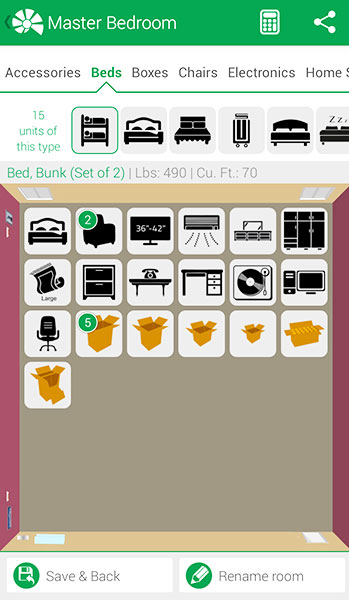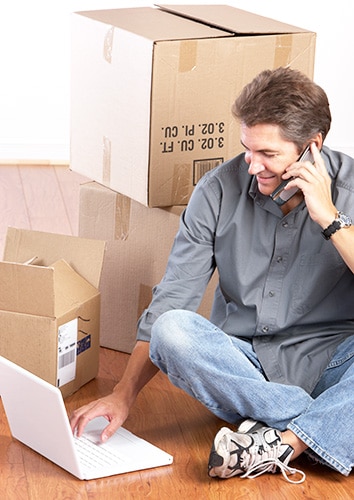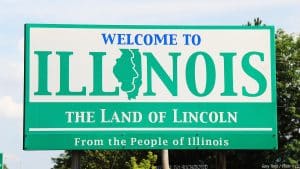How to Plan a House Move
Planning a house move can be compared to doing a big, complicated jigsaw puzzle – you need to put all the pieces together in the correct way in order to achieve final success. If you miss a puzzle piece or put it in the wrong place, you’ll never get the intended image. Likewise, if you miss a step of the relocation plan or don’t schedule it right, you’ll never finish the necessary moving preparations in time and won’t be able to ensure a smooth and trouble-free relocation.
Here is how to solve the moving planning puzzle:
When to Start Planning a Move
So, you need to make a moving plan, but when exactly do you need to make it? How far in advance should you start planning your move so that you have enough time to consider every aspect of the complex relocation process and think out every little detail?
It’s best to start planning your move as early as possible, of course, but depending on several factors, your relocation planning may take anywhere between a month and a year:

- Relocation distance – The further away you’re moving, the more complicated the relocation process is going to be, so you’ll have to start devising your moving strategy months in advance;
- Move size – The bigger your household, the longer it will take to prepare everything and everyone for moving, so the earlier you’ll have to start planning your relocation;
- Time of your move – If you’re moving during peak season (from May to September), you’ll need to plan your relocation well ahead of time, as moving services are in high demand during this busy period and it won’t be easy to find reputable movers who can accommodate all your needs and preferences.
Bonus tip: In order to feel financially comfortable with your forthcoming relocation, you need to be able to cover all moving-related expenses without difficulties. You’re, therefore, advised to start saving for your relocation about a year or so before your move, so you have enough money in your pocket – or in your bank account – when the time comes to put your relocation plan into action. (See also: How much money to save when moving)
Now that you know when to start planning your relocation, you need to learn how to start planning a move.
Where to Start When Planning to Move
Your first step when planning to move house is to do some research and take several important decisions:
1) Get to know your new area
If you’re thinking of moving to a new city, you need to be aware of the challenges and benefits your relocation can bring about. (See also: Pros and cons of moving to a new city)
So, make sure you know what to expect from your new area and how to best prepare for your new life:
- Research the job market, career opportunities, and employment options in your new city (even if you have already secured a job, it’s always good to know what options you have and plan accordingly);
- Find out what the cost of living is in your new area so that you can plan your post-relocation expenses for food, transportation, utilities, medical care, and other everyday necessities;
- Get familiar with the local laws and regulations to be able to put your paperwork in order in due time;
- Gather as much information as possible about the social practices and norms in your new community to get better prepared for your new life;

It’s time to turn the spotlights to your future area. - Find out what to expect from the weather as the specific climatic conditions in your new area will not only determine the type of clothes and weather-related items you’re going to need, but may also affect your health and your safety and make it necessary for you to take certain precautions;
- See what your new area has to offer in terms of healthcare, education, entertainment, cultural activities, etc.
See also: Things to consider when moving house; What to know when moving out of state
If you’re planning to move to a new house in your current city, you’re not going to encounter any significant differences in your general surroundings or way of life. All you’ll need to do is gather some useful information about your new neighborhood and find the right home for you.
2) Find an appropriate new home
When moving to a new city, it may be difficult to find the right new home for you and your family before the relocation. Yet, you’re strongly advised to research your housing options in advance and, if possible, visit your new area, so you can look for an appropriate property to buy or to rent.
If you find a place that meets your needs and preferences (in terms of size, home features, location, price, etc.), things will be much easier – you’ll know exactly where you’re moving to, will be able to make a floor plan of your new house or apartment (so you can make an informed decision about which of your old items to bring along), and will be able to take your stuff directly to your new home (so you don’t need storage).
If you can’t find an appropriate place, your best option is to move into temporary housing first, so you can get to know the area and its specifics (infrastructure, crime rate, green areas, local amenities, community life in different neighborhoods, etc.) before you choose a permanent home to settle in. This, however, will make your transition to the new environment even more difficult as you’ll have to move twice during a very short period of time, find a place to store the household items you cannot take with you into temporary housing, etc.
If you’re moving across town, it will be much easier to find the perfect new home for you and your family – just make sure you choose a good neighborhood to move to and take advantage of the short distance to make your relocation as easy as possible. You can find some useful tips for moving to a new neighborhood here.
What to Do First When Planning to Move
Once you have done all the necessary research, it’s time to start planning to move out:
1) Decide on a moving date

When is the best time to move house? The answer depends on the specific circumstances in your case (start of a new job, end of a lease agreement, beginning and end of the school year, etc.) and some important seasonal considerations (weather conditions, traffic conditions, and personal engagements differ in different seasons and so do moving rates). When deciding on a moving date, you need to remember that:
- Moving in peak season (from May to September) will cost you much more than moving during a less busy period of the year. Besides, it will be more difficult to secure the services of a reputable moving company during the summer months when moving services are in high demand and good movers are fully booked months in advance. (See also: Benefits of moving in off-peak season);
- Moving on a weekday is cheaper than moving during the weekend, but you’ll have to take some time off from work and friends and relatives won’t be able to help you move (See also: Is it better to move during the week or during the weekend);
- Moving on a holiday has the same disadvantages as moving in peak season.
Click here to find out what to consider when choosing a moving date.
Bonus tip: If you’re planning to use professional moving help, be sure to start researching movers as soon as you decide on the time period of your move and book the services of your chosen moving company as early as possible – about 4-8 weeks in advance. (See also: How far in advance to book movers)
Once you know the date of your move, you can make a moving calendar that will allow you to organize the time you have left until the Big day and keep track of your progress.
2) Create a moving timeline
A moving timeline is, in fact, a comprehensive to-do-list which includes all the moving tasks that need to be taken care of prior to moving day and the deadlines for their completion. The tasks on the list should be prioritized according to their importance, difficulty, and urgency, and customized to the specific needs of every individual home mover.
In fact, a personalized moving calendar is widely believed to be the perfect organizational tool for planning a move. It will not only help you keep track of things and organize your time in the best possible manner, but will also allow you to break every major relocation task into achievable mini-goals and focus on the ones at hand, so that you don’t get overwhelmed by the magnitude of the moving process. A quick look at your customized moving calendar will be all you need to set clear goals for the day and ensure that you don’t forget anything important.
Click here to learn how to make an efficient moving timeline and personalize it so that it suits your particular relocation needs and requirements.

When you know what needs to be done in preparation for your move, you have to make sure that you’ll be able to cover the related costs.
3) Set up a moving budget
You cannot possibly plan a successful move without planning your relocation-related expenses. Creating a moving budget will help you assess your financial situation and determine what exactly you can afford in terms of moving assistance and post-relocation expenses. You will get an accurate idea of how much money you’re going to need for each phase of the relocation process and will be able to keep track of the moving costs and respond quickly if a moving task exceeds its financial limit.
When setting up your moving budget, you need to plan for the costs of the necessary packing supplies and required moving services (or moving truck rental), as well as for travel costs, insurance costs, post-relocation expenses, and contingency expenses. (Related useful information: Hidden moving costs; Forgotten costs of moving on your own)
The more realistic and efficient your moving budget, the less financial risks you’re going to face during your relocation adventure. So, make sure you calculate your moving costs correctly and ascertain that you have at least double the amount you estimated as necessary for your move – just to be on the safe side.
What to Do When Planning to Move
Now that you’ve taken all the necessary initial steps of your relocation plan, you can proceed with the actual moving preparations:
1) Pare down your possessions
When planning to move to a new house, you probably want to start afresh and create the home of your dreams. To do so, you need to furnish your new place with practical and aesthetically pleasing items, to surround yourself with things that you love and that have special meaning to you.
Many of your current possessions (duplicate, outgrown, outdated, worn-out, or damaged items; items you don’t really like; items you won’t be able to use in your new surroundings; etc.) don’t fall in either category and won’t be appropriate for your dream home. Besides, taking all your earthly possessions with you will be very expensive (moving costs are based on the weight of the shipment and the complexity of the job, so the more items you decide to relocate, the more you’ll have to pay) and very difficult (packing, loading, and unloading will take longer and will require more effort, some items will have special packing and moving requirements, you’re going to need more packing supplies, a larger moving crew, a bigger moving truck, etc.)
Therefore, you’re strongly advised to go through your belongings well in advance of your move and decide what is worth taking to your new home and what should be left behind. Consider the value of every individual item, the type of your move, and the moving cost and divide your items in three groups – “Things to keep”, “Things to sell or donate”, and “Things to throw away”. (See also: How to declutter your home before moving)

Get rid of the items from the last two groups before the relocation and begin preparing the rest of your belongings for moving.
Related useful information: How to get rid of unwanted items when moving; Move it or sell it – what to sell before moving
2) Make a moving inventory
Once you decide which of your belongings to take with you and which ones to leave behind, it’s time to create a moving inventory. Make a detailed list of the items you have for moving and include all the relevant information about them – their type, distinctive features (material, make, model number, etc.), estimated value, destination room, and, most importantly, a statement of their current condition together with sufficient evidence (photos, warranties, quality certificates, appraisal statements, etc.).
Your inventory list will help you estimate the final cost of your move and keep track of your possessions throughout the entire relocation process.
You can find more details on how to make a moving inventory here.
3) Ensure moving help
Regardless of whether you’re planning to move to another state or just to another neighborhood in your current city, you cannot possibly relocate your entire household on your own – you need help:
- Hiring a professional moving company is your best bet, especially when moving out of state – the experts will have the appropriate moving equipment, extensive experience, and professional know-how to handle your move in the safest and most efficient way possible. You’re recommended to fill in a moving quote to get in touch with several reputable moving companies, request in-home estimates of your moving costs, compare the offers, research the movers that seem to best suit your needs, and choose the right relocation partner for you;
- Of course, renting a moving vehicle and transporting your belongings to your new address by yourself is also a viable option, especially if you’re moving short distance. If you decide on a self-move, however, make sure you enlist the help of reliable friends as you won’t be able to lift and carry your heavy furniture and other bulky household items on your own.
4) Get appropriate packing supplies
Your moving inventory will help you determine what type of packing supplies and how many of them you’re going to need to prepare your items for shipment. Make sure you get the necessary packing materials well ahead of time, so you can start the packing process as early as possible:
- Buy quality packing materials (brand new moving boxes, bubble wrap, packing paper, packing peanuts, foam sheets, etc.) for your more delicate and more valuable possessions;
- Look for free packing supplies (used cardboard boxes and bubble wrap, end rolls of newsprint, etc.), so you can lower your packing expenses;
- Use alternative packing materials you already own – suitcases, backpacks, bags, baskets, buckets, bins and crates instead of moving boxes, old newspapers and magazines instead of packing paper, shredded office paper and balls of yarn instead of packing peanuts, old clothes, towels, and linens instead of bubbled wrap, regular blankets instead of moving blankets, etc.

Keep in mind though that used moving boxes and alternative packing materials won’t provide as good protection to your items as specialized packing supplies and be extra careful when packing your belongings. (See also: The risk of using free moving boxes)
5) Pack your belongings
Unless you’ve hired professional packers to prepare your items for shipment, you need to start the packing process as early as possible, so you have enough time to take good care of your items and provide them with adequate protection:
- Get familiar the golden rules of packing and look for some clever packing tricks that will help you save time and space (and a lot of nerves, too!);
- Find out what items not to pack for moving (non-allowable items);
- Pack the rooms and the items that you use the least first. (You can find some more useful information on when to pack what for moving in our detailed packing timeline.);
- Allow yourself enough time for packing storage areas as they present a particularly difficult packing challenge;
- Use an efficient room-by-room packing checklist to streamline the packing process;
- Pack your belongings with utmost care and use the safest and most efficient packing techniques for packing different kinds of items;
- Devise an efficient labeling system and write any necessary handling instructions with big bold letters, so they’re clearly visible;
- Pack an open-first box with the essentials you need to survive for several days without the rest of your belongings (when moving long-distance) or the items you’re going to need immediately upon arrival (when moving locally).
Be careful to avoid rookie packing mistakes and make sure you provide proper moving insurance for your belongings.
6) Take care of the paperwork
Moving involves a lot of paperwork (especially when planning a cross-country move) and dealing with paperwork takes a lot of time and patience. You need to start collecting and updating the necessary documents a month or so in advance, so everything is ready by the time of your move:
- Collect and organize personal documents, financial papers, medical records, school records, etc. (See also: Important documents to take when moving);
- Change your address with the USPS a couple of weeks before your move, so your mail is forwarded to your new address by the time you arrive in your new home;

So many papers… - Notify people and institutions of your move (family and friends, utility companies and other service providers, government institutions and financial institutions, etc.) and give them your new address;
- Transfer utilities – arrange for the utilities in your old home to be disconnected on the day after your move and the ones on your new place to be running on move-in day;
- Cancel or transfer memberships and subscriptions.
Good to remember: Make sure you have all the necessary moving-related paperwork, read it carefully, and don’t sign anything you don’t understand or don’t agree with (or any incomplete or blank documents).
Keep all the receipts and documents related to your relocation in a separate binder and keep your documents with you all the time.
7) Organize a smooth moving day
Moving day is the culmination of the moving process – all your relocation planning boils down to this moment, so you need a very good moving day plan if you want things to go smoothly and efficiently. You need to plan for everything – the weather, the traffic, the parking issues, the best way to deal with your movers, the safety of your items, your property, and everyone involved in the move, the possible difficulties, the possible solutions… you need to even plan for the food and drinks!
To manage it all and keep everything going according to plan, you need to know what happens on moving day and how to best prepare for it. Click here to find a detailed moving day checklist that will help you survive the big day and achieve a safe smooth and successful relocation.
Must-read: 20 things to do before moving
With this, your “planning a move checklist” is complete. All that is left to do is to come up with a plan for reducing the notorious moving stress.

























